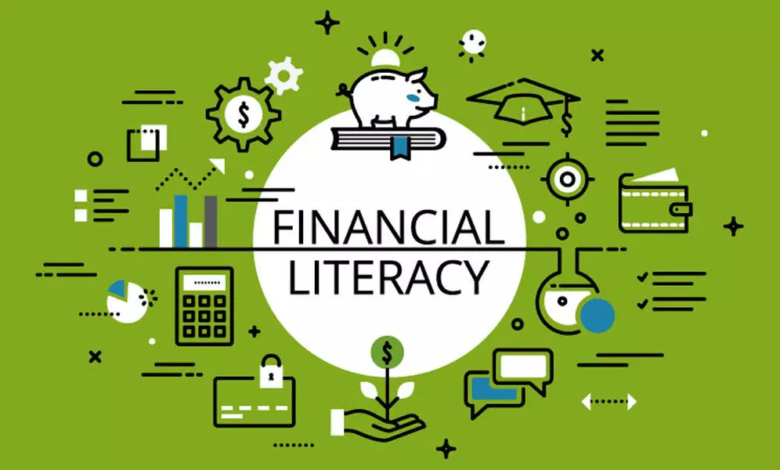A Parent’s Guide To Financial Literacy

Financial literacy is an essential life skill, and cultivating it early can set the stage for a future of fiscal responsibility and savvy money management. As parents, you hold the key to building the foundation of your children’s financial literacy. The lessons you teach them today can have lasting impacts on their personal finances. This guide is designed to help you navigate the process, providing practical strategies and tools to empower your children with the knowledge they need to make smart financial decisions.
Introducing Debt Resolution Early
Before diving into more advanced topics, it’s important to introduce the concept of debt. While your child may not fully grasp all the complexities, explaining that borrowing money means it needs to be paid back—with potential extra costs—sets a crucial foundation. Discuss debt resolution and why it’s important to avoid unnecessary debt. This could be through simple examples, like borrowing a toy and then needing to return it or trade something in return.
Starting with the Basics: Identifying Money
The journey to financial literacy begins with understanding the basics. Start by teaching your children how to identify different coins and bills. Make it fun and engaging by turning it into a game. For example, you can spread out various coins and ask your child to sort them by type or value. This simple activity helps them recognize money and introduces them to the concept of different values associated with each coin and bill.
Creating Real-Life Scenarios: Playing Store
One of the best ways to teach kids about money is through real-life scenarios. Set up a small store at home where your children can use play money or real coins and bills to “shop” for items like snacks or toys. This hands-on activity allows them to practice making purchases, counting money, and making change. It’s a practical and enjoyable way for them to learn about transactions and the value of money.
The Power of Saving: Piggy Banks and Savings Goals
A piggy bank is a timeless tool for teaching kids about saving. Give your child a piggy bank and encourage them to save a portion of any money they receive, whether it’s from allowances, chores, or gifts. Make it more engaging by setting savings goals together. For instance, they could save for a new toy, a special outing, or a gift for a family member. Watching their savings grow helps them understand the value of delayed gratification and planning for future rewards.
Budgeting Basics: Simple Strategies for Young Minds
Teaching your children about budgeting doesn’t have to be complicated. Start with simple strategies that are easy for them to grasp. For example, if your child receives an allowance, help them divide it into different categories: spending, saving, and sharing. This approach not only teaches budgeting but also introduces the concept of allocating money for different purposes.
Embracing Mindful Spending: Making Thoughtful Choices
Mindful spending involves making thoughtful choices about where to spend money. Encourage your children to think before they buy. Ask questions like, “Do you really need this?” or “Is there something else you’d rather save for?” These conversations help them develop critical thinking skills and make more intentional decisions about their spending.
Investing in Knowledge: Books and Resources for Financial Education
There are numerous books and online resources designed to teach kids about money. Consider adding a few to your child’s reading list. Books like “Money Ninja” by Mary Nhin and “The Berenstain Bears’ Trouble with Money” by Stan and Jan Berenstain offer engaging stories that impart valuable financial lessons. Additionally, websites and apps like Junior Achievement and PiggyBot provide interactive learning experiences that can make financial education fun and accessible.
Teaching Generosity: The Importance of Giving Back
Financial literacy isn’t just about saving and spending; it’s also about understanding the importance of giving. Encourage your children to set aside a portion of their money for donations. Whether it’s giving to a local charity, participating in a school fundraiser, or helping out a friend in need, teaching generosity helps them understand the impact they can have on their community and the joy of helping others.
Leading by Example: Modeling Good Financial Habits
Children learn a lot by observing their parents. Model good financial habits by demonstrating mindful spending, saving, and budgeting in your daily life. Share your financial decisions with your children in age-appropriate ways. For instance, you could explain why you’re choosing to save money instead of making an impulsive purchase or how you plan your budget to cover monthly expenses.
Conclusion: Building a Strong Financial Future
Building financial literacy in children is a gradual process that requires patience and consistency. By starting with the basics and gradually introducing more complex concepts, you can equip your children with the knowledge and skills they need to make smart financial decisions. Remember, the goal is to create a solid foundation that will support them throughout their lives. With these strategies, you can help your child grow into a financially savvy and responsible adult, ready to navigate the financial challenges and opportunities they will encounter.



